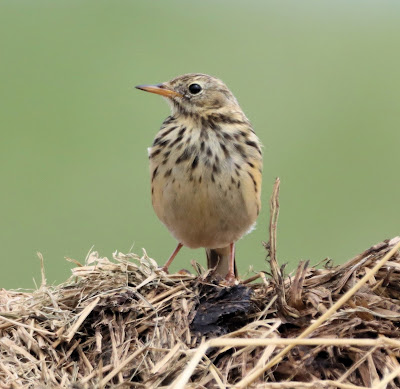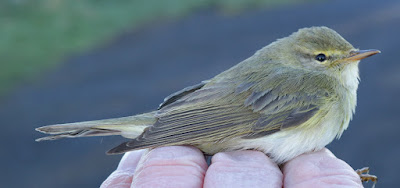Wednesday evening’s forecast looked hot to go for a Thursday ringing session so I met up with Will and Andy at 0630 out Pilling way, a week after our last get together since when it has barely stopped raining.
“In July 2023 some parts of England set new rainfall records, with Greater Manchester, Lancashire and Merseyside all recording their wettest July since records began some 150 years ago. The succession of low pressure systems resulting in long periods of damp and windy weather in much of the country was in sharp contrast to July 2022, when there were heatwaves and temperatures as high as 40.3C.”
Weather
Although hopes were high we didn’t do at all well with just 5 birds caught - 4 Reed Warblers and a Sedge Warbler. Always looking for an excuse we blamed the weather for the lack of birds and the rubbish catch.
Plan B came into play and I set off to another site a car ride away and our brilliant idea for Friday morning.
Here are heaps of waste material from a bio plant where the rain of recent days has created muddy pools that hold thousands if not millions of tiny flies and other food items of the right size for pipits and wagtails.
The sun was out, the gate posts and fences proving to be ideal places for the birds to pose. I grabbed a few photos of Meadow Pipits, Pied Wagtails and Yellow Wagtails and it seemed a shame that there were no Grey Wagtails around for the full set of common wags.
Yellow Wagtail
Yellow Wagtail
Meadow Pipit
Meadow Pipit
Pied Wagtail
Pied Wagtail
Pied Wagtail
Pied Wagtail
Meadow Pipit
Pied Wagtail
Yellow Wagtail
Yellow Wagtail
It’s arranged. Friday morning is a meet up with Andy and an attempt to ring a few of the species above.
Look in again on Friday evening folks to see how we did.
UPDATE. Friday morning was windy, breezier than the forecasted 6-8mph and although we turned out in hope, the wind proved too troublesome to continue. This frustration was intensified by the sight of 100 + Swallows, 25+ Pied Wagtails, 1 Yellow Wagtail, 3 Reed Buntings, 8 Goldfinch and a Great-spotted Woodpecker, none of which we could catch.
Reed Bunting
Linking this weekend to Eileen's Saturday Blog.



























%20(1).jpg)




































.jpg)













